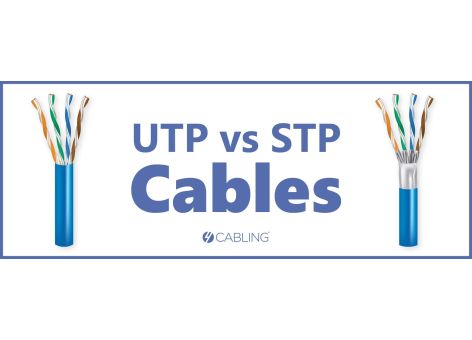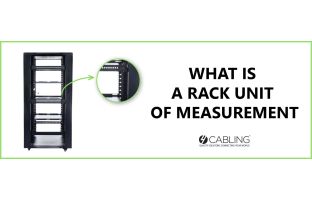What is the difference between STP and UTP cables?
If you are installing network or telecommunications wiring, you will most likely need to choose between STP and UTP cables - the two most common types of cables.
As these cables have notable differences, it’s important to carefully consider which one is right for your application. To help you make the right decision, here are the defining characteristics of STB cables and UTP cables.
What is a UTP cable?
UTP stands for Unshielded Twisted Pair. It is a type of cable that is commonly used for networking and communications applications.
UTP cables consist of four pairs of wires that are twisted together and encased in a single jacket. The wires are made of copper and are used to transmit data. The twisting of the wires helps to reduce interference and noise, which can improve the performance and reliability of the cable.
UTP cables are widely used in a variety of applications, including Ethernet networking, telephone systems, and security systems. They are often preferred over other types of cables, such as coaxial cables, due to their ease of installation and lower cost.
There are several different categories of UTP cables, each designed for specific performance and capabilities. The most commonly used categories are CAT5, CAT5E, CAT6, and CAT6A. The number in the name of the category indicates the performance and capabilities of the cable. For example, Cat6 cables are designed for higher speeds and greater distances than Cat5 cables.
What is a STP cable?
STP stands for Shielded Twisted Pair. It is a type of cable that is similar to UTP cables, but with the addition of a shield layer that is used to reduce interference and noise.
Similarly to UTP cables, STP cables also consist of four pairs of wires that are twisted together. The wires are made of copper and are used to transmit data. The shield layer is typically made of a metallic material, such as foil or braided wire, and is used to protect the wires from external interference and noise.
STP cables are often used in applications where there is a high level of interference or noise, or where data security is a concern. They are commonly used in industrial environments, military applications, and other situations where performance and reliability are critical.
What is the main difference between STP and UTP cables?
The main difference between the two is the presence of a shield layer in STP cables. This additional layer in STP cables means that each type of cable has different advantages.
What are the advantages of UTP cables?
There are several key advantages of UTP cables including:
- Ease of installation: UTP cables are relatively easy to install, as they are flexible and can be easily routed through tight spaces and around obstacles. They are also relatively lightweight, which makes them easier to handle and install in comparison to other types of cables.
- Low cost: UTP cables are generally more affordable than other types of cables, such as coaxial cables or fibre optic cables. This makes them an attractive option for many applications where cost is a concern.
- Wide availability: UTP cables are widely available and are used in a variety of applications, which makes them easy to obtain and replace if necessary.
- Compatibility: UTP cables are compatible with a wide range of networking devices and protocols, including Ethernet, Fast Ethernet, and Gigabit Ethernet. This makes them a versatile option for many networking applications.
- Ease of maintenance: UTP cables are relatively easy to maintain, as they do not require special equipment or techniques to repair or replace. Similarly to STP cables, UTP cables can also be fixed with crimp plugs.
What are the advantages of STP cables?
Advantages to using STP (Shielded Twisted Pair) cables include:
- Reduced interference and noise: STP cables are shielded. This means that they have a layer of metallic material, such as foil or braided wire, that surrounds the wires and helps to reduce interference and noise. The extra layer can improve the performance and reliability of the cable, especially in environments with a high level of interference or noise.
- Data security: STP cables are often used in applications where data security is a major concern, as the shield layer helps to protect the wires from external interference and tampering.
- Performance: STP cables are designed to support higher speeds and greater distances than UTP (Unshielded Twisted Pair) cables. They are also capable of supporting higher frequencies, which can make them a good choice for applications that require high-bandwidth connectivity.
- Durability: STP cables are generally more durable than UTP cables, as they have a stronger and more robust construction. This makes them a good choice for use in industrial environments or other harsh environments where the cables may be subject to wear and tear.
Comparing the main differences between STP and UTP Cables.
| UTP Cables | STP Cables |
| Higher likelihood of noise and crosstalk | Comparatively less likely to experience crosstalk and noise |
| Does not require grounding cable | Requires |
| Easy to install | Comparatively more difficult to install |
| Slower data rates | Higher data rates |
| Cheaper | More expensive |
Need more help? Get in contact!
Both STP and UTP cables have distinct advantages, so it can be difficult to determine which one is suitable for your application. If you would like personalised advice into cabling solutions, contact 4Cabling to speak with a member of our customer service team who can provide you with further information.







